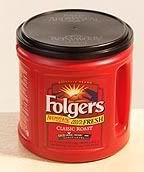There are many good blogs and websites that discuss couponing at specific stores. Some are linked on the right sidebar under blogs I love, and others can be found by a good google search for "coupon matchups." I do not intend to do much matching of coupons on my blog, but will point to others who do it well.
Again, I am in the midwest, so I am going to focus on the stores in our area. With careful shopping and observation, I've discovered that out of the stores in our area, Fareway by far offers the best prices as a whole. Other stores in the area will offer what is often termed as "loss leaders"--items where they mark it down to well below retail in order to get a shopper in the door to buy other marked up items. Some people go around and shop at every store, buying only their loss leaders, but I feel that going to many stores to get a bargain is counterproductive. I may save some money on groceries, but I am losing money in gas by driving around to many stores, and my time is also worth a lot to me.
Some people do not know this, but Fareway will price match any local grocery ads. You can take the ad in to show them, but I've found in the past that they almost always do it automatically. I'll see a really great deal in the Hy-Vee ad, then find that Fareway has the item priced the same or sometimes cheaper in their store.
Ask at your local store, but Fareway does take printable coupons; in fact, they link to smartsource on their own webpage. Hy-Vee and Target have their own printable grocery coupons, so this can add some depth to your planning. In cases where Target or Hy-Vee have coupons that match up with their sales AND with the manufacturer's coupons, you are often getting items close to free. Coupon stacking is allowed in both of these stores; this is simply using the manufacturer's coupon and the store coupon together.
As an example:
Right now, Target has a great ad with grocery deals on items for Thanksgiving cooking. In the ad, they list Del Monte canned vegetables for 45 cents (very good price!), Campbell's cooking soups for 49 cents, Pepperidge Farm stuffing for$2.50, and French's fried onions for $2.75. Target also has printables for these items that will stack with the manufacturer's coupons.
Del Monte Vegetables:
- Print out Target coupons for $1 off 6 cans.
- Use coupons from the Sunday circular for $1 off 8 cans.
- Buy 8 cans x 45 cents = $3.60 - $1 (TP) - $1 (SC) = $1.60 for 8 cans or 20 cents per can. That is a savings of over 50% from the sale price, which was itself a steal.
- No Target coupon to match, but this price is very good.

- Use printable coupon (find at Campbell's Kitchen) for $1 off 4 cans.
- Buy 4 (or other multiples of 4) cans = $1.96 - $1 printable = 96 cents for 4 cans or 24 cents per can. Again, this is a savings of over 50% from the awesome sale price.
The first example showed how coupon stacking can work for you. My next example will show how often times being able to stack doesn't work to your advantage. We use Folger's coffee in our house for the most part, though I have a few brands I will substitute if the price is low enough. Target has a printable coupon for 75 cents off Folgers, which you could stack with the manufacturer's coupon. Target has the Folger's on sale for $7.14, which is a sale price over what is commonly around $8.
Folger's Coffee (Target):

- Use $1 coupon from the Sunday circular.
- Use 75 cent coupon from Target
- $7.14 - $1 (SC) - 75 cent (TP) = $5.39 which is a great deal until you see that Fareway has Folger's for $5.99 right now.
- Use $1 coupon from the Sunday circular
- $5.99 - $1 (SC) = $4.99 for 1 can of Folger's, a savings of around $3 per can, 40 cents from what Target's deal would be even with the stackable coupons.
The main key is to look in the ads for items you regularly buy, and buy ahead when you can. In the Folger's scenario, I could notice I'm running low on coffee, add it to my list, and pay around $8 for a canister. Instead, before my coffee runs low I would notice the sale price and buy a few canisters for a savings of $3 each. When I run out of coffee, I go to my storage shelf and grab one off the shelf.
Some of these sales are predictable, so you start to know how many you should buy. I'm not advocating 10 or 12, but keeping 2 or 3 extras on hand can save you a lot of money. This is the kind of thing that is described in the Grocery Game, the concept of buying on sale, adding in coupons to make the price even better, and stocking up. You have to pay to have them plan it for you. In some cases, it might be worth having them tell you what to buy and when, but for me, it's hard to justify spending that money to save some money. In the next post, I will explain stockpiling a little more, but I think this is good information on how to begin with coupons.
Terms used: TP (Target Printable), SC (Sunday circular), PC (Printable coupon)
No comments:
Post a Comment